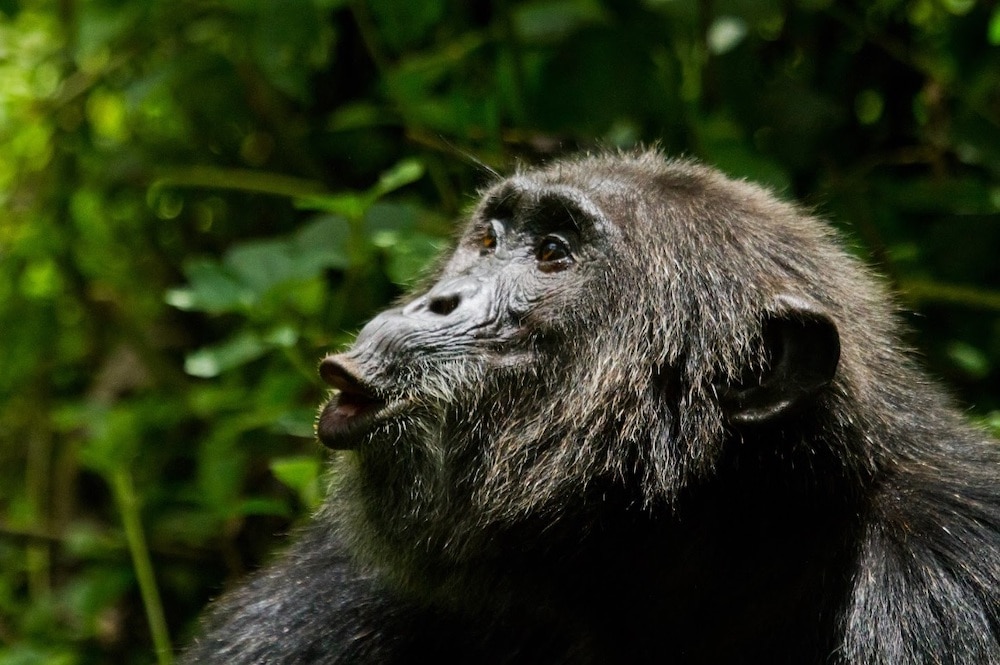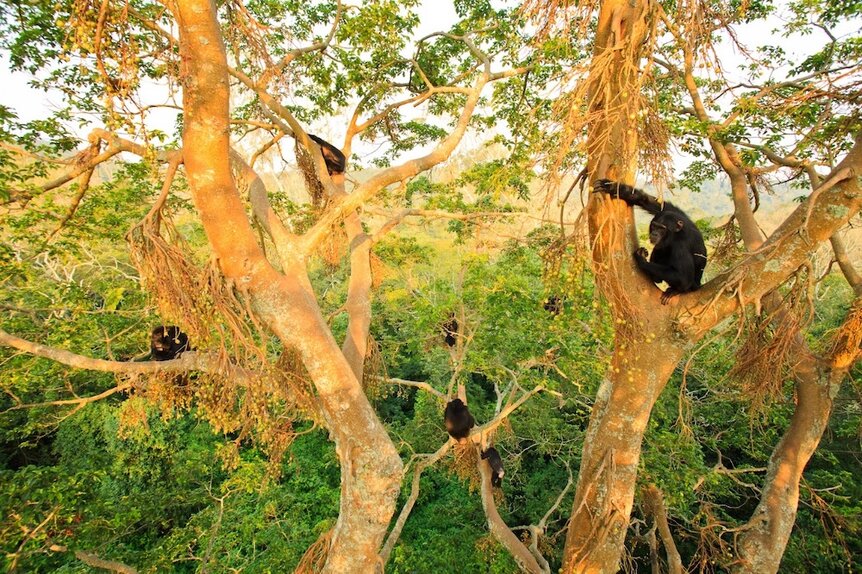Create a free profile to get unlimited access to exclusive videos, sweepstakes, and more!
Chimpanzees communicate while hunting, which could reveal how language evolved in humans
The beacons are lit, chimpanzees call for aid!

It’s difficult to look at our nearest evolutionary relatives, the chimpanzee, and not see a shadow of ourselves. So much about our bodies and behaviors are similar and, indeed, understanding the ways in which we are the same could give us a window into our own past. Perhaps that’s why we’re so willing to imagine them taking over the world like in Planet of the Apes, or living and playing baseball alongside us like in the movie Ed.
Whether or not chimpanzees would make good ball players, they do have a talent for communication and cooperation, as evidenced by a recent study published in the journal Science Advances. Joseph Mine from the Department of Comparative Language Science at the University of Zürich, along with colleagues, combed through decades of data gathered at the Kibale National Park in Uganda to uncover how chimpanzees communicate when preparing for a hunt.
Over the last two and a half decades, research assistants at the park have observed chimpanzees while engaging in hunting behavior and recorded their behavior by hand. Poring through the data, Mine found that hunting is often preceded by a particular type of vocalization known as a bark. Those vocalizations communicate the intention to hunt to other chimpanzees and call upon them to join the hunting party.
“This is one of the first examples in the wild of evidence of complex forms of cooperation being built upon a system of communication. It kind of confirms the suspicion that cooperation and communication co-evolved,” Mine told SYFY WIRE.
Meat isn’t a particularly large part of a chimpanzee’s diet. They subsist mainly on fruit and leaves, but they do need the occasional addition of meat-based protein. How and when they go about hunting for meat differs based on a number of factors, one of which might be the overall abundance of food available. At this particular research site, scientists found that hunting is more frequent when there’s more food available. That might seem counterintuitive, but researchers believe an excess of energy makes individuals more willing to engage in costly behaviors like hunting.
When they do decide to hunt, they’re mostly chasing monkeys. Chimpanzees will sometimes grab hold of small ground-dwelling mammals, but by and large they’re seeking out smaller primates which share the same arboreal environment. The research found that hunts are significantly more effective, resulting in successful kills more often and in a shorter amount of time, when chimpanzees work together. When one individual barks, typically about three or four other individuals will bark in response. Shortly thereafter, the hunt begins. Of course, some chimpanzees are better at initiating hunts than others.
“Some individuals are what we call impact hunters and they’re especially proficient. Not only are they better at hunting, but they’re good at recruiting. When these individuals hunt, there tends to be greater participation. Broadly speaking, there’s a very strong social component, even in the sense that when a kill is made, there’s a lot of meat sharing going on,” Mine said.
It’s unclear at this point whether hunting communications are intentional or a sort of reflexive response. It’s possible, of course, that the calls are an automatic result of excitement at the sight of prey animals and the subsequent cooperation is only a secondary consequence. The alternative is that this is an example of intentional, conscious communication. Certainly, human communication is intentional — at least most of the time — and this could represent a link to a common ancestor dating back more than 7 million years. In either case, it provides additional evidence for the relationship between cooperation and communication, something which likely reinforces itself and results in more and more complex behaviors over time.
“When you start to see more complex forms of cooperation such as hunting, which involves multiple individuals and a lot of different behaviors, that’s where we think vocal communication is especially important. As vocal communication becomes more complex, it allows groups to engage in more complex forms of cooperation, which in turn creates more complexity in the communication system,” Mine said.
This feedback loop, especially if the communication is determined to be conscious behavior, could provide a road map for how language and cooperation emerged in our own species. Comparatively simple vocalizations like grunts and whoops might result in more complex behaviors necessitating even more complex communication. If the evolutionary cards fall in just the right way, eventually you get poetry, and we might be watching the beginnings of that happening right in front of us.



























